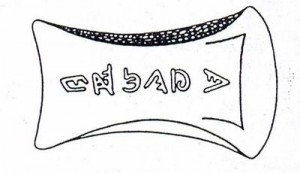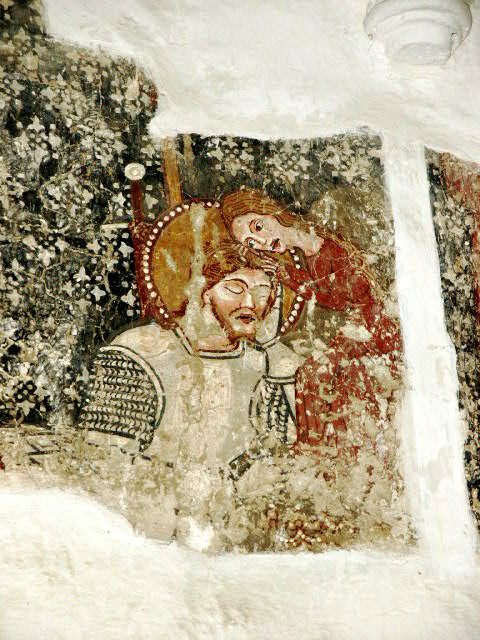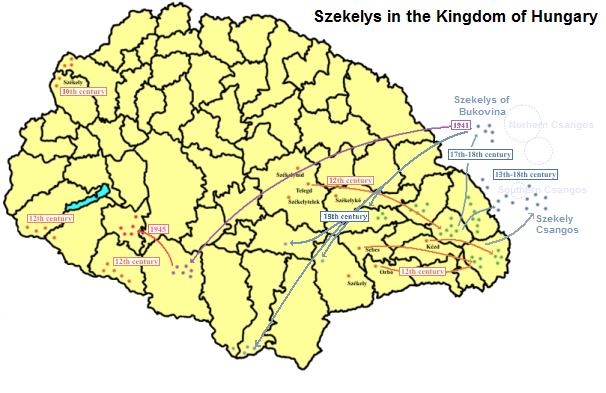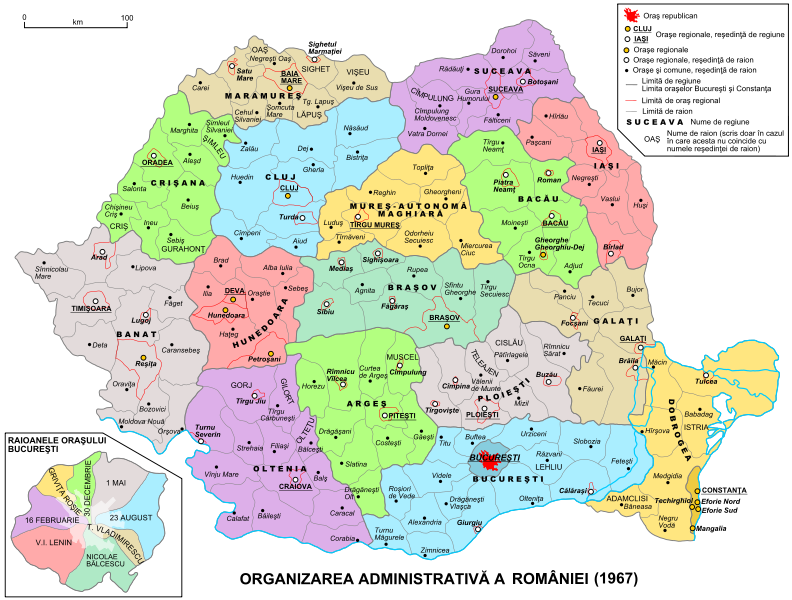|
Atid
Atid (, ) is a commune in Harghita County, Romania. It lies in the Székely Land, an ethno-cultural region in eastern Transylvania. The route of the Via Transilvanica long-distance trail passes through the village of Inlăceni, which is administered by Atid commune. Component villages The commune is composed of five villages: History From ancient times the area was populated by Dacians. After the Roman conquest of Dacia, the Romans imposed their control in the area by constructing a fort known as Praetoria Augusta in Inlăceni village. The fort was discovered in 1858. The villages were historically part of the Székely Land region of Transylvania province. They belonged to Udvarhely district until the administrative reform of Transylvania in 1876, when they fell within Udvarhely County in the Kingdom of Hungary. After the Treaty of Trianon of 1920, they became part of Romania and fell within Odorhei County during the interwar period. In 1940, the second Vienna Award ... [...More Info...] [...Related Items...] OR: [Wikipedia] [Google] [Baidu] |
Harghita County
Harghita County (, and , ) is a county () in the center of Romania, in eastern Transylvania, with the county seat at Miercurea Ciuc. Demographics 2002 census In 2002, Harghita County had a population of 326,222 and a population density of 52/km2. * Hungarians – 84.62% (or 276,038) * Romanians – 14.06% (or 45,870) * Romani – 1.18% (or 3,835) * Others – 0.14% 2011 census In 2011, it had a population of 302,432 and a population density of 46/km2. * Hungarians – 85.21% (or 257,707) * Romanians – 12.96% (or 39,196) * Romani * Others – 1.76% (or 5,326). 2021 census In 2021, it had a population of 291,950, and a population density of 43/km2. * Hungarians – 85.67% (or 232,157) * Romanians – 12.41% (or 33,634) * Romani - 1.82% (or 4,928) * Others – 0.1% (or 282). Harghita county has the highest percentage of Hungarians in Romania, just ahead of Covasna county. The Hungarians form the majority of the population in most of the county's municipal ... [...More Info...] [...Related Items...] OR: [Wikipedia] [Google] [Baidu] |
Old Hungarian Script
The Old Hungarian script or Hungarian runes (, 'székely-magyar runiform', or ) is an alphabetic writing system used for writing the Hungarian language. Modern Hungarian is written using the Latin-based Hungarian alphabet. The term "old" refers to the historical priority of the script compared with the Latin-based one. The Old Hungarian script is a child system of the Old Turkic alphabet. The Hungarian people, Hungarians Hungarian conquest of the Carpathian Basin, settled the Carpathian Basin in 895. After the establishment of the Kingdom of Hungary (1000–1526), Christian Hungarian kingdom, the old writing system was partly forced out of use during the rule of Stephen I of Hungary, King Stephen, and the Latin alphabet was adopted. However, among some professions (e.g. shepherds who used a "rovás-stick" to officially track the number of animals) and in Transylvania, the script has remained in use by the Székelys, Székely Magyars, giving its Hungarian name . The writing could ... [...More Info...] [...Related Items...] OR: [Wikipedia] [Google] [Baidu] |
Unitarian Church Of Transylvania
The Unitarian Church of Transylvania (; ), also known as the Hungarian Unitarian Church (; ), is a Nontrinitarian Christian denomination of the Unitarian tradition, based in the city of Cluj, Transylvania, Romania. Founded in 1568 in the Eastern Hungarian Kingdom by the Unitarian preacher and theologian Ferenc Dávid (c. 1520–1579), it is the oldest continuing Unitarian denomination in the world. It has a majority- Hungarian following, and is one of the 18 religious denominations given official recognition by the Government of Romania. The Transylvanian and Hungarian Unitarians represent the only branch of Unitarianism not to have adopted a congregationalist polity, and remains quasi- episcopal; the Irish Non-subscribing Presbyterian Church, a distinct body closely related to Unitarianism, has a presbyterian structure.Paul F. Bradshaw, ''The New SCM Dictionary of Liturgy and Worship'', SCM-Canterbury Press Ltd, London, 2002, p.460. The Unitarian Church of Transylvania is ... [...More Info...] [...Related Items...] OR: [Wikipedia] [Google] [Baidu] |
Kingdom Of Hungary
The Kingdom of Hungary was a monarchy in Central Europe that existed for nearly a millennium, from 1000 to 1946 and was a key part of the Habsburg monarchy from 1526-1918. The Principality of Hungary emerged as a Christian kingdom upon the Coronation of the Hungarian monarch, coronation of the first king Stephen I of Hungary, Stephen I at Esztergom around the year 1000;Kristó Gyula – Barta János – Gergely Jenő: Magyarország története előidőktől 2000-ig (History of Hungary from the prehistory to 2000), Pannonica Kiadó, Budapest, 2002, , pp. 37, 113, 678 ("Magyarország a 12. század második felére jelentős európai tényezővé, középhatalommá vált."/"By the 12th century Hungary became an important European factor, became a middle power.", "A Nyugat részévé vált Magyarország.../Hungary became part of the West"), pp. 616–644 his family (the Árpád dynasty) led the monarchy for 300 years. By the 12th century, the kingdom became a European power. Du ... [...More Info...] [...Related Items...] OR: [Wikipedia] [Google] [Baidu] |
National Institute Of Statistics (Romania)
The National Institute of Statistics (, INS) is a Romanian government agency which is responsible for collecting national statistics, in fields such as geography, the economy, demographics and society. The institute is also responsible for conducting Romania's census every ten years, with the latest census being organised in 2022. Leadership The head of the NIS is currently Tudorel Andrei, while the three vice-presidents are: * Ioan-Silviu VÎRVA, in charge of economic and social statistics * Marian Chivu, in charge of national accounts and the dissemination of statistical information * Beatrix Gered, in charge of IT activities and statistical infrastructure History Romania's first official statistics body was the Central Office for Administrative Statistics (''Oficiul Central de Statistică Administrativă''), established on July 12, 1859, under the reign of Alexandru Ioan Cuza. The organisation, one of the first national statistics organisations in Europe, conducted its ... [...More Info...] [...Related Items...] OR: [Wikipedia] [Google] [Baidu] |
Romani People In Romania
Romani people in Romania, locally and pejoratively referred to as the (), constitute the second largest ethnic minority in the country (the first being Hungarians). According to the 2021 census, their number was 569,477 people and 3.4% of the total population. The size of the total population of people with Romani ancestry in Romania is even more, with different estimates varying from 4.6 percent to over 10 percent of the population, because many people of Romani descent do not declare themselves Roma. For example, in 2007 the Council of Europe estimated that approximately 1.85 million Roma lived in Romania, based on an average between the lowest estimate (1.2 to 2.2 million people) and the highest estimate (1.8 to 2.5 million people) available at the time. This figure is equivalent to 8.32% of the population. On the other hand, less than half are native speakers of the Romani language. Origins History, genetics and linguistics all indicate the Roma originate from northern Indi ... [...More Info...] [...Related Items...] OR: [Wikipedia] [Google] [Baidu] |
2021 Romanian Census
The 2021 Romanian census () was a census held in Romania between 1 February and 31 July 2022, with the reference day for the census data set at 1 December 2021. The census was supposed to be done in 2021, but it was postponed due to the COVID-19 pandemic in Romania in order to avoid census takers from getting infected when coming into contact with ill or quarantined people. It was the first census held in Romania in which data was collected online, something that had support among Romanian youth. The census was divided into three phases: one in which personal data of the Romanian population was collected from various sites; another in which the population was to complete more precise data such as religion, in which town halls would help the natives of rural areas to answer the census; and a third one in which census takers would go to the homes and households of those who did not register their data online. Data for this census was planned not to be collected on paper, but inste ... [...More Info...] [...Related Items...] OR: [Wikipedia] [Google] [Baidu] |
Hungarians In Romania
The Hungarian minority of Romania (, ; ) is the largest Minorities of Romania, ethnic minority in Romania. As per the 2021 Romanian census, 1,002,151 people (6% of respondents) declared themselves Hungarian, while 1,038,806 people (6.3% of respondents) stated that Hungarian language, Hungarian was their mother tongue. Most Hungarians, ethnic Hungarians of Romania live in areas that were parts of Hungary before the Treaty of Trianon of 1920. Encompassed in a region known as Transylvania, the most prominent of these areas is known generally as Székely Land (; ), where Hungarians comprise the majority of the population. Transylvania, in the larger sense, also includes the historic regions of Banat, Crișana and Maramureș. There are forty-one counties of Romania; Hungarians form a large majority of the population in the counties of Harghita County, Harghita (85.21%) and Covasna County, Covasna (73.74%), and a large percentage in Mureș County, Mureș (38.09%), Satu Mare Count ... [...More Info...] [...Related Items...] OR: [Wikipedia] [Google] [Baidu] |
Hungarians
Hungarians, also known as Magyars, are an Ethnicity, ethnic group native to Hungary (), who share a common Culture of Hungary, culture, Hungarian language, language and History of Hungary, history. They also have a notable presence in former parts of the Kingdom of Hungary. The Hungarian language belongs to the Ugric languages, Ugric branch of the Uralic languages, Uralic language family, alongside the Khanty languages, Khanty and Mansi languages, Mansi languages. There are an estimated 14.5 million ethnic Hungarians and their descendants worldwide, of whom 9.6 million live in today's Hungary. About 2 million Hungarians live in areas that were part of the Kingdom of Hungary before the Treaty of Trianon in 1920 and are now parts of Hungary's seven neighbouring countries, Hungarians in Slovakia, Slovakia, Hungarians in Ukraine, Ukraine, Hungarians in Romania, Romania, Hungarians in Serbia, Serbia, Hungarians of Croatia, Croatia, Prekmurje, Slovenia, and Hungarians in Austria, Aust ... [...More Info...] [...Related Items...] OR: [Wikipedia] [Google] [Baidu] |
Székelys
The Székelys (, Old Hungarian script, Székely runes: ), also referred to as Szeklers, are a Hungarians, Hungarian subgroup living mostly in the Székely Land in Romania. In addition to their native villages in Suceava County in Bukovina, a significant population descending from the Székelys of Bukovina currently lives in Tolna County, Tolna and Baranya County, Baranya counties in Hungary and certain districts of Vojvodina, Serbia. In the Middle Ages, the Székelys played a role in the defense of the Kingdom of Hungary#Middle Ages, Kingdom of Hungary against the Ottoman Empire, Ottomans in their posture as guards of the eastern border. With the Treaty of Trianon of 1920, Transylvania (including the Székely Land) became part of Romania, and the Székely population was a target of Romanianization efforts. In 1952, during the Socialist Republic of Romania, communist rule of Romania, the former counties with the highest concentration of Székely population – Mureș County#His ... [...More Info...] [...Related Items...] OR: [Wikipedia] [Google] [Baidu] |
Magyar Autonomous Region
The Magyar Autonomous Region (1952–1960) (; ) and Mureș-Magyar Autonomous Region (1960–1968) were autonomous Regions of the People's Republic of Romania, regions in the Romanian People's Republic (later the Socialist Republic of Romania). History One of the key factors behind the autonomous region was the desire of the communist Romanian government to win over the Hungarian population in Transylvania. Support for the Romanian Communist Party was very strong in ethnically Hungarian areas, and Hungarian communists made up 26% of all communists in Romania before World War II. Following the Hungarian Northern Transylvania, rule of Northern Transylvania during World War II, ethnic Hungarians now made up 10% of Romanian population, and the communist government adopted a policy of appeasement towards the Hungarian minority; this was a pragmatic stance as in contrast to largely pro-socialist Hungarians in Romania, ethnic Romanians were unsupportive of the Communist Party and the com ... [...More Info...] [...Related Items...] OR: [Wikipedia] [Google] [Baidu] |







